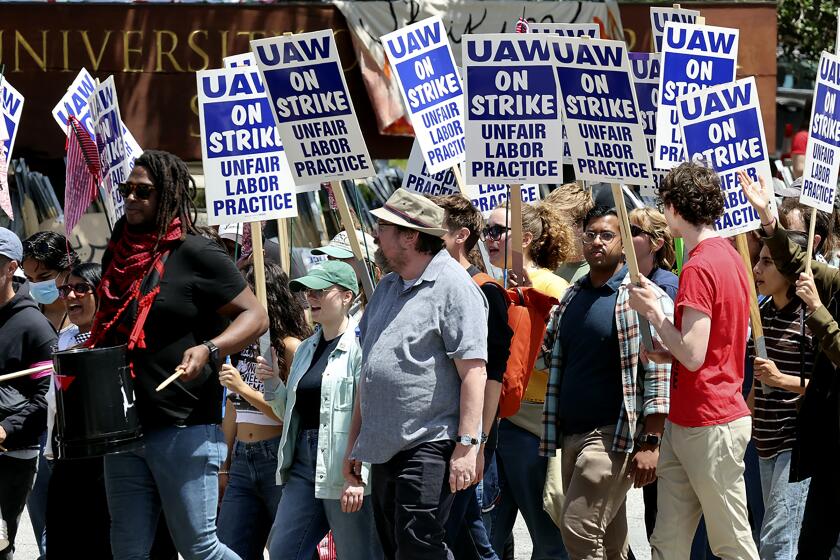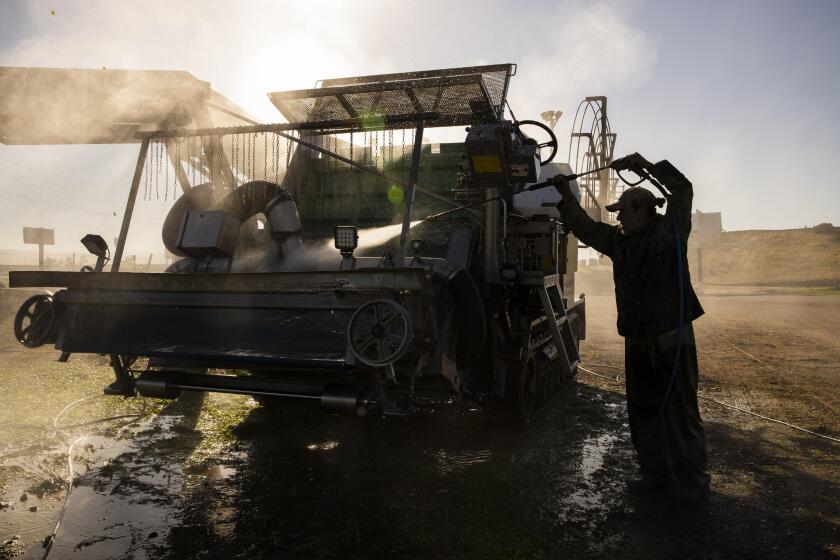‘Expansion’ Key Word in Debate Over Oil Project
In a dispute that could determine whether a Wilmington refinery is permitted to emit more air pollution, an oil company and a union are fighting over whether a proposed $100-million refinery project is an expansion or merely a technological improvement.
Opponents in the debate, which is being waged before Los Angeles zoning officials, are Union Pacific Resources Corp. and a union that has members who live near the refinery.
The issue is more than a semantic quibble.
If the so-called hydrotreater project near the harbor waterfront is deemed an expansion, the California Coastal Act will apply and require that the project cause no new air pollution.
On the other hand, if the project is not considered an expansion, only the weaker regulations of the South Coast Air Quality Management District will apply and the project will be permitted, even though officials predict that it will create new pollution.
Refinery officials want the hydrotreater, which removes sulfur from oil, to enable them to process more high-sulfur oil.
Pollution Feared
The union, Local 250 of the Steamfitters and Pipefitters International Assn., says the project would increase air pollution and endanger the public, including some members who live nearby.
Refinery officials say eliminating any new pollution would require additional design and construction costs. Union officials counter by saying that the project could hurt the local economy if it and other new sources of pollution prompt federal officials to follow through on threats to place severe restrictions on new industry in the Los Angeles Basin.
Estimated daily emissions from the project are 107 pounds of fine particulate matter, 21 pounds of carbon monoxide, 32 pounds of sulfur dioxide, 54 pounds of reactive organic gases and 95 pounds of nitrous oxides, according to a revised version of the project’s environmental impact report.
The chemicals react with sunlight to produce smog and ozone. Fine particulate matter is ash composed of particles so small that they are cannot be filtered when inhaled and lodge deep within the lungs.
In 1985, a benchmark year for measuring air pollution, the refinery industry in the Los Angeles air basin produced overall daily emissions of 4,800 pounds of fine particulate matter, 6,800 pounds of carbon monoxide, 50,600 pounds of sulfur dioxide, 31,200 pounds of reactive organic gases and 19,500 pounds of nitrous oxides.
In the refinery’s current configuration, Union Pacific Resources trades partly refined high-sulfur oil--which it cannot refine within AQMD guidelines--with other refineries that do have hydrotreaters, according to Tom Weber, technical services manager for Union Pacific Resources. In return, Weber said, the company receives partly refined oil with low amounts of sulfur.
The hydrotreater project was given preliminary approval by Associate Zoning Administrator Darryl L. Fisher on Aug. 2, but the union objected, and on Dec. 13 the Board of Zoning Appeals sent the case back to Fisher, who will rehear it Feb. 2 at 11 a.m. at the San Pedro Municipal Building.
The dispute about whether the project is an expansion arises because the state Coastal Act, which bars additional air and water pollution from expansions of facilities near the coast, does not define the term expansion. Fisher said he intends to check with the Coastal Commission to see if any precedents are relevant. Any city decision about coastal issues may be appealed to the commission.
Union Pacific’s Weber said the hydrotreater should not be considered an expansion because it will not enable the refinery to increase its capacity to refine oil, which is now 60,000 barrels a day.
Physical Expansion
Ann Broadwell, an attorney for the union, countered that the hydrotreater should be considered an expansion because the project is in effect a physical expansion of the facility.
“There is nothing in the law that says you have to be able to produce more product,” she said.
If the project is not considered an expansion, the AQMD will permit the project because of so-called pollution credits. Union Pacific Resources was allowed the credits because it installed a fluid catalytic cracking unit in 1983 that enabled the refinery to reduce air pollution.
Yen Bui, an AQMD air quality engineer, said: “We are doing our best to limit their increases, but if it is in our guidelines, we let them have it.”
In a hydrotreater, hot, partly refined oil loaded with sulfur compounds is passed over a catalyst in the presence of hydrogen. The sulfur binds with the hydrogen to produce the toxic gas hydrogen sulfide, which can be easily separated from the oil. The gas is then reduced to elemental sulfur in a separate process.
The additional air pollution comes primarily from the combustion needed to heat the oil and the hydrogen before they enter the hydrotreater.
More to Read
Start your day right
Sign up for Essential California for news, features and recommendations from the L.A. Times and beyond in your inbox six days a week.
You may occasionally receive promotional content from the Los Angeles Times.






